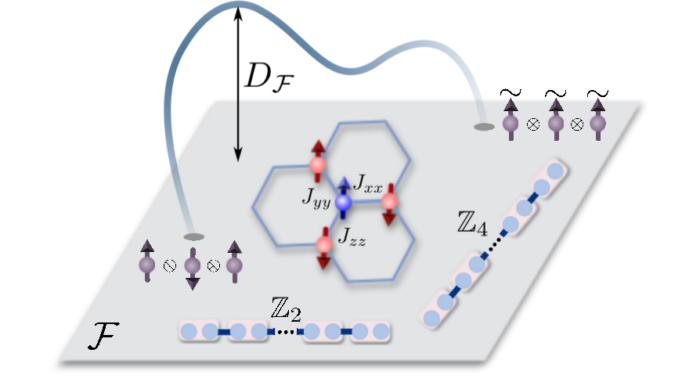Properties of the Interaction Distance

Interaction distance is bounded such that
1. This follows from the definition of trace distance and how it relates to the well known quantity -- quantum fidelity.
Interestingly,
does not saturate the upper bound. As shown in our paper, the upper bound
is
, which is roughly equal to 1/6. The lower bound (0) is of course achieved by any exactly free system.
When mean-field theory can be used to describe the ground-state (for example, above the upper critical dimension), then
. In this case, the system has a free description in terms of the free modes defined in the original basis.
However, interaction distance is much more general than mean-field theory because it allows one to define the effective description of the system in terms of modes that are non-linear functions of the original modes. Hence, the interaction distance also captures the non-perturbative effects in the system.
Solutions of quantum many-body problems show that the low energy physics is often described by emergent quasiparticles that may behave far differently to the particles described in the initial problem, e.g., a number of pairs of fermions collectively acting as a population of bosons.
in principle allows for this emergent complexity when searching for an optimal free theory for the spectrum. This is discussed in more detail in the section General optimal free description.
Interaction distance obeys finite size scaling around critical points, similar to local observables at second order phase transitions (e.g., magnetisation, correlation length, etc.). In the first paper on interaction distance we have demonstrated for the 1D Ising model that
follows the standard Fisher-Barber scaling law, i.e.,
, with the exception of the parameter
which was introduced to ensure that
remains upper-bounded by 1.
